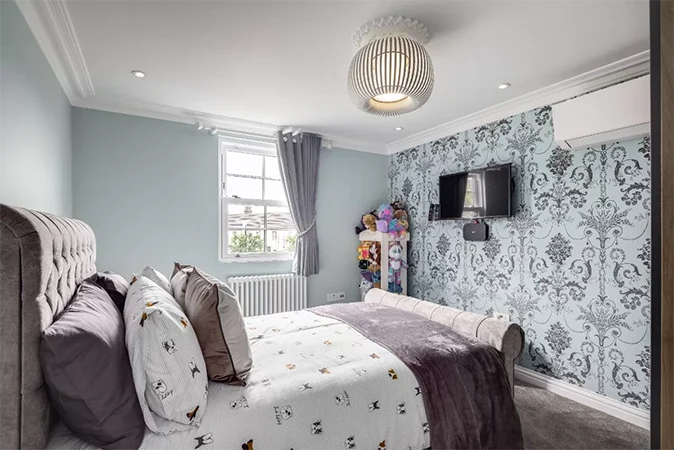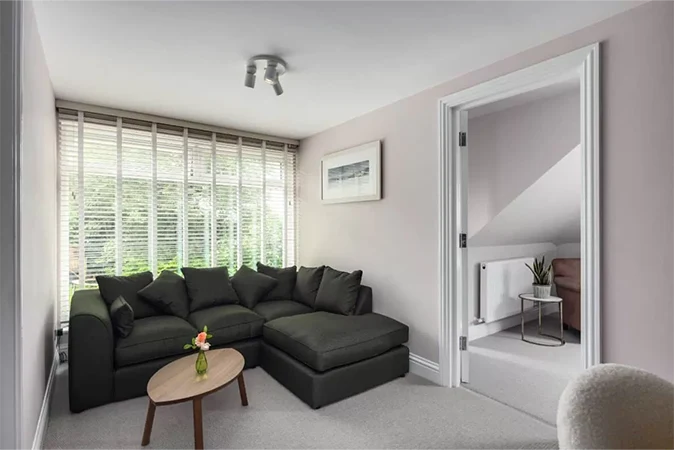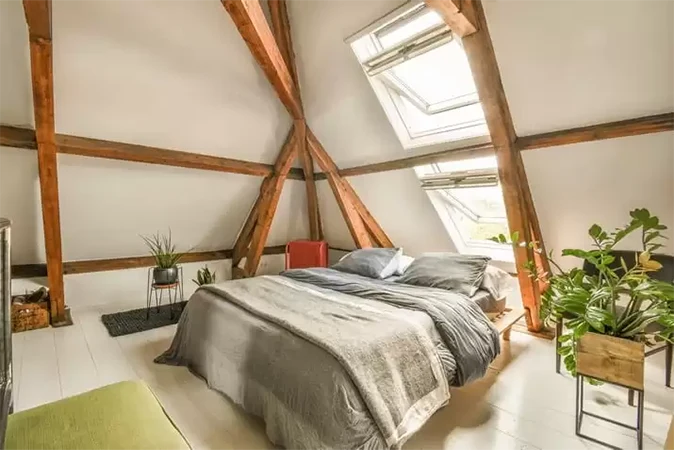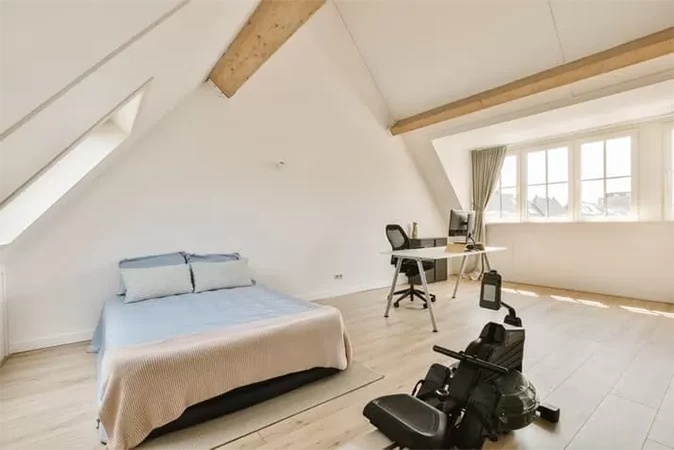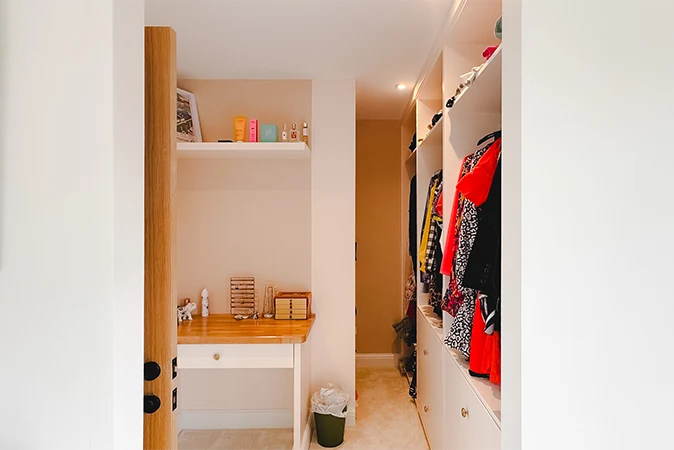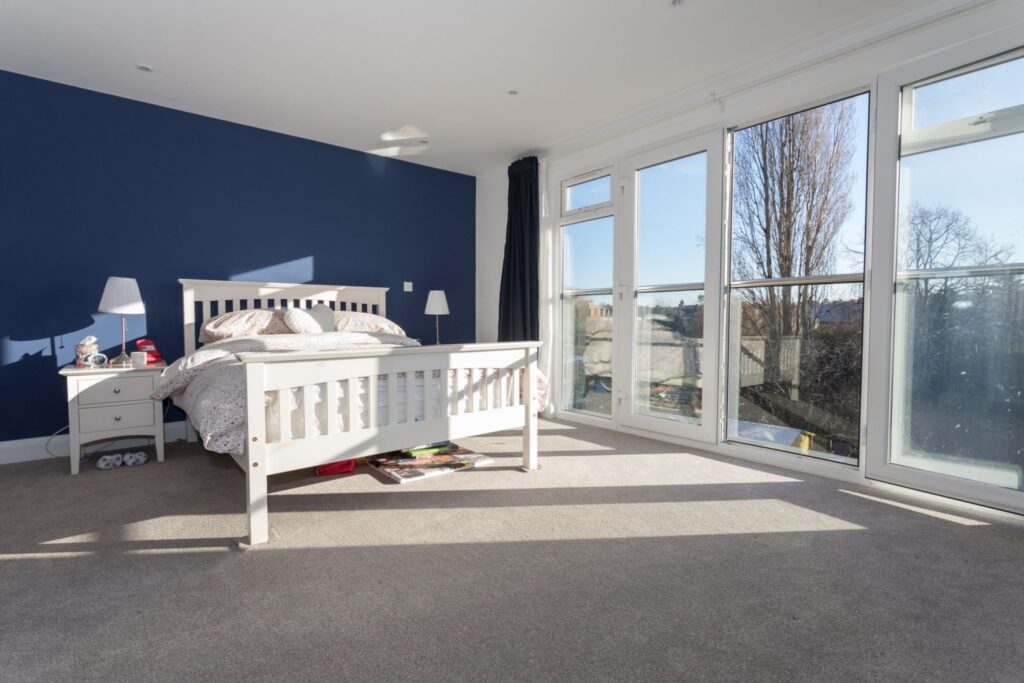Loft apartments, characterised by their exposed brickwork and either a bohemian aesthetic or a sleek, minimalist vibe, are increasingly sought after as desirable living spaces. These aren’t the draughty roof spaces above traditional homes but are often luxuriously appointed properties that could rival penthouses in terms of amenities and price. For instance, the £1,800 per week Metropolitan Wharfs in Wapping exemplifies the high end of loft living spaces, illustrating their popularity among the elite. Yet, this trend isn’t confined to the affluent; many urban dwellers across various socio-economic backgrounds are drawn to these unique dwellings, particularly in London where developers are keen on transforming characterful warehouses and other former industrial spaces into chic inner-city homes.Loft apartments, characterised by their exposed brickwork and either a bohemian aesthetic or a sleek, minimalist vibe, are increasingly sought after as desirable living spaces. These aren’t the draughty roof spaces above traditional homes but are often luxuriously appointed properties that could rival penthouses in terms of amenities and price. For instance, the £1,800 per week Metropolitan Wharfs in Wapping exemplifies the high end of loft living spaces, illustrating their popularity among the elite. Yet, this trend isn’t confined to the affluent; many urban dwellers across various socio-economic backgrounds are drawn to these unique dwellings, particularly in London where developers are keen on transforming characterful warehouses and other former industrial spaces into chic inner-city homes.

Why Choose Loft Apartments?
Advantages of Loft Living
The appeal of loft apartments extends beyond their unique architectural elements. These spaces often start as blank canvases due to their bland, industrial origins, allowing residents to implement creative and personalised interior designs. The open-plan layouts typical of lofts deliver a sense of space and freedom that is hard to replicate in standard apartments.
In densely populated metropolitan areas where outdoor space is a premium, many lofts offer balconies or verandas, enabling residents to enjoy private roof gardens or barbeque areas. These outdoor spaces are treasured for their ability to provide panoramic views of the cityscape — a rarity in busy cities. Additionally, floor-to-ceiling windows enhance these views while flooding the apartments with natural light, adding to the allure of loft living.
Another significant benefit is the tranquillity offered by such apartments. Positioned high above the hustle and bustle of city life, loft apartments can offer a serene retreat from the incessant noise and stress of urban environments. This elevation often means that lofts are quieter and more secluded, providing a peaceful living environment.
Disadvantages of Loft Living
However, loft living is not without its challenges. One of the primary considerations is accessibility. Lofts are typically located in older industrial buildings that may not have elevators. This means that living in a loft apartment usually requires navigating multiple flights of stairs, which might not be feasible for everyone, especially those with mobility issues or families with young children.
Structurally, buildings not initially designed for residential purposes may also be prone to issues such as damp and rot if not properly renovated and maintained. These factors can contribute to higher maintenance requirements and potential long-term issues.
Furthermore, while lofts can be ideal for singles or professional couples, they are generally less suited to families, particularly those with small children who require safe, easily accessible living arrangements without the hazard of stairs.
Tailoring Your Loft to Your Lifestyle
When considering a loft conversion or choosing a loft apartment, it’s essential to reflect on how the space can be tailored to fit your lifestyle. Whether you’re a creative artist needing a spacious studio or a professional requiring a home office, lofts offer the flexibility to design according to your specific needs. For those who entertain often, open-plan lofts provide the perfect backdrop for gatherings with ample room and unique architectural features that are sure to impress guests. Meanwhile, for those who seek a quiet sanctuary, lofts can be designed with cosy nooks and soundproof areas that serve as peaceful retreats within the urban jungle.
Historical Charm with Modern Comforts
One of the unique aspects of loft living, especially in conversions of old industrial buildings, is the blend of historical charm with modern comforts. These spaces often feature original elements such as exposed beams, brick walls, and large factory windows, offering a sense of character that new constructions struggle to replicate. Modern renovations can add luxurious amenities like updated kitchens, smart home technology, and energy-efficient systems, making these lofts not only visually appealing but highly functional and sustainable. Preserving these historical features while providing contemporary comforts creates a living space that is truly best of both worlds.
Overcoming Loft Living Challenges
While loft living offers numerous benefits, the challenges it presents, such as potential structural issues or limited accessibility, require proactive solutions. For instance, investing in high-quality renovations can mitigate problems like damp or poor insulation common in older buildings. Hiring experienced professionals who specialise in loft conversions or renovations ensures that these issues are addressed effectively, preventing costly repairs in the future. Additionally, for those concerned about accessibility, looking for buildings with elevator access or planning for potential future installations can make loft living more practical for a wider range of people, including those with mobility issues or families with young children.
Addressing Structural Concerns
One of the primary challenges of loft living is ensuring the structural integrity of the space. Older buildings, in particular, may have hidden issues such as sagging beams, inadequate support, or compromised foundations. These structural concerns not only affect the safety of the occupants but can also lead to costly repairs if left unattended.
To overcome these challenges, it’s essential to enlist the expertise of qualified structural engineers and architects during the planning and renovation stages. These professionals can conduct thorough inspections to identify any existing issues and devise appropriate solutions to reinforce the loft space. Whether it involves installing additional support beams, strengthening foundations, or upgrading structural components, addressing these concerns proactively is key to ensuring a safe and stable living environment.
Enhancing Insulation and Ventilation
Another common challenge in loft living is maintaining comfortable temperatures and preventing issues like dampness and condensation. Poor insulation and inadequate ventilation can exacerbate these problems, leading to discomfort and potential health risks for occupants.
Investing in high-quality insulation materials and modern ventilation systems can significantly improve the thermal efficiency and air quality of the loft space. We often come across loft conversions that have not been insulated correctly in which we have to go back and repair, we recent completed a improvement to a loft conversion in Sutton with this exact issue. By properly insulating walls, floors, and roofs, homeowners can reduce heat loss in the winter and keep the space cool in the summer, leading to energy savings and enhanced comfort year-round. Additionally, installing mechanical ventilation systems, such as heat recovery ventilators (HRVs) or whole-house fans, helps to regulate humidity levels and promote air circulation, minimising the risk of mild and mildew growth.
Ensuring Accessibility for All
Accessibility is another important consideration for loft living, especially for individuals with mobility challenges or families with young children. In buildings without elevator access, navigating stairs to reach the loft space may pose difficulties for some residents.
To address this challenge, homeowners can explore options for retrofitting elevators or chairlifts to improve accessibility within the building. While installing these systems may require upfront investment and structural modifications, they can greatly enhance the usability and inclusivity of the space, allowing residents of all ages and abilities to enjoy loft living comfortably.
LMB Group: Your Loft Conversion Specialists
If the loft apartment lifestyle appeals to you but seems impractical or out of reach, consider converting the loft space in your existing home. A loft conversion can add a bedroom, bathroom, or additional living room, making it an attractive and beneficial option for expanding your living space. Loft conversions not only add functional living space to your home but can significantly increase your property’s value. With extensive experience in transforming attic spaces, LMB Group is a leader in providing high-quality loft conversions across the London area. We work closely with our clients from the initial design phase through to project completion, ensuring each conversion is tailored to meet individual needs, budgets, and timelines. Whether you’re looking to add value to your property or simply need more space, loft conversions offer a practical solution. Contact LMB Group today to explore how we can help you enhance your home with a beautifully designed loft conversion, completed on time and within budget.








